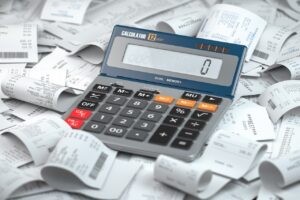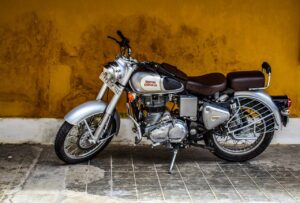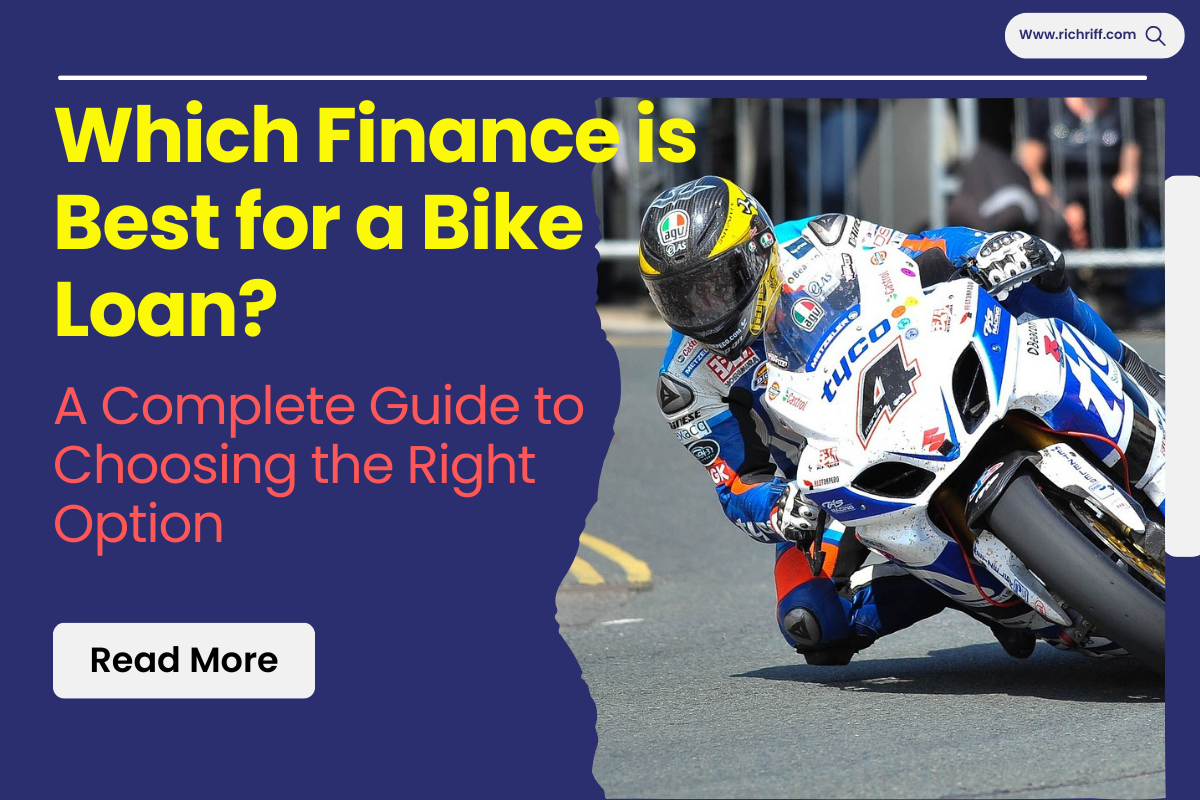So, you’re dreaming about cruising down the road on that shiny new bike. We get it! But then comes the big question—how do you pay for it? You’ve got a few bucks saved, but it ain’t enough. You might have heard people talk about bike loans. But, wait a sec… Which finance option is best for a bike loan? Is there even a “best” option? Let’s break it down so that even your younger brother, who just learned to ride, can get it!

What is a Bike Loan Anyway?
Alright, let’s start simple. A bike loan is like borrowing money to buy a bike. You don’t have all the money now? No big deal. A bank or a finance company lends you the money so you can ride off into the sunset sooner rather than later. But remember, nothing in life comes for free—yeah, you gotta pay the money back with interest. Interest is like a fee the bank charges you for lending you the money. It’s how they make their dough.
The Usual Players in Bike Loans
Now, you might wonder, “Where do I get this loan from?” Well, the most common options are:
- Banks – Big, trusted, and offer stable rates.
- Non-Banking Financial Companies (NBFCs) – Flexible and can give you quick approvals.
- Dealership Financing – Sometimes the showroom where you’re buying the bike has a tie-up with a finance company.
Let’s break these down a little more because not all bike loans are created equal!
Banks: The Old Reliable
So, banks are usually the first place that pops into your head when you think of loans. They’ve been around forever, right? The good thing about banks is they’re pretty reliable. You know you’re not going to wake up one day and find out the bank disappeared (unless something crazy happens, but that’s another story!).
- Advantages of Bank Loans: The interest rates from banks are often lower than from other places. So, you end up paying less in the long run. That’s a win!
- Drawbacks: But banks? Man, they can be slow. You gotta jump through hoops sometimes—paperwork, credit checks, income proof. If you’re in a hurry, this might be a drag.
If you have a steady job, a good credit score (you’ve been paying your bills on time), and you like the idea of lower interest rates, banks are a solid bet.

Non-Banking Financial Companies (NBFCs): The Speedy Ones
Next, we’ve got NBFCs. Now, these guys aren’t exactly banks. But, hey, they act like them. They’re licensed to give loans, but they play by slightly different rules.
- Advantages of NBFCs: Quick approvals, less strict paperwork, and, oh yeah, they’re more flexible. If you’re someone who’s self-employed or maybe has a low credit score, NBFCs might not mind so much. They’ll still consider giving you a loan.
- Drawbacks: Here’s the catch though—NBFCs often charge higher interest rates than banks. You know, because they’re taking on a bit more risk lending to people who might have a shaky financial history.
So, if you’re in a hurry and can’t bother with all that bank bureaucracy, NBFCs are your go-to. Just be ready to pay a little extra over time because of the higher interest.
Dealership Financing: Easy-Peasy, But Watch Out!
Finally, we’ve got dealership financing. Picture this: You walk into the bike showroom, you find your dream bike, and bam—the salesperson offers you a loan right there. Sounds too good to be true, right?
- Advantages of Dealership Financing: The biggest pro here is convenience. You’re already at the dealership; they’re like, “Hey, let us handle the financing for you.” It’s super easy, and you don’t even have to leave the shop. Plus, sometimes the dealership has special offers or lower rates if they have a partnership with a finance company.
- Drawbacks: But be careful! Dealership financing can be sneaky. Sometimes they might add hidden fees or offer higher interest rates than a bank or NBFC. You gotta be on your toes with this one and really read the fine print.
So, dealership financing is great if you want everything done in one place, but make sure you’re not getting ripped off with extra fees.

How to Choose Which is Best for You?
Okay, now you know your options: banks, NBFCs, and dealership financing. But how do you choose which one’s best for you? Well, that depends on a few things:
- Your Credit Score: If you’ve got a good credit score (let’s say 750+), a bank will probably offer you the best deal. You’ll get lower interest rates, and you’ll save money in the long run.
- Your Need for Speed: If you’re in a rush to get that bike, NBFCs or dealership financing will be quicker. Banks might take their sweet time processing everything.
- Your Flexibility: If your financial situation is a little shaky—maybe you’re self-employed or don’t have a regular income—NBFCs will probably be more flexible with their requirements.
Interest Rates: The Deal Maker or Breaker
Now, let’s talk about interest rates because they make a HUGE difference. Think of it like this: the higher the interest rate, the more money you’re gonna end up paying back to the lender. Yikes, right?
- Bank Interest Rates: Usually range from 6.5% to 10%. Lower rates are great for saving money, but you’ll need to be patient with the approval process.
- NBFC Interest Rates: Generally, these guys charge between 10% and 18%. They’ll approve your loan quicker but charge you more for the convenience.
- Dealership Financing Rates: These can vary wildly. Sometimes they’ll match the banks; sometimes they’ll be closer to NBFCs. It’s crucial to ask them straight up about the rates and compare.
Hidden Costs and Fees: Don’t Get Caught Off Guard!
Alright, here’s something a lot of people forget to consider: the hidden fees. These could be processing fees, penalties for late payments, foreclosure charges (that’s when you want to pay off your loan early), and so on. Always ask for a breakdown of all costs upfront.
- Banks: Generally transparent but might have foreclosure charges.
- NBFCs: Could have higher processing fees and penalties for missed payments.
- Dealership Financing: Sometimes they sneak in extra fees, so be careful. Ask for details.
Loan Tenure: The Long or Short of It
When you take out a bike loan, you’ll have to decide how long you want to repay it. This is called the loan tenure.
- Short Tenure (1-2 years): Higher monthly payments, but you’ll pay less interest overall.
- Long Tenure (3-5 years): Lower monthly payments, but you’ll end up paying more in interest.
If you’ve got a steady income and can manage higher EMIs (Equated Monthly Installments), go for a shorter tenure. If you need more time, choose a longer tenure but be aware of the added interest costs.
Bottom Line: So, Which One is Best?
Well, there’s no one-size-fits-all answer here. If you’ve got great credit and can wait a bit for approval, banks will probably give you the best deal with lower interest rates. But if you’re in a rush or have a more complicated financial situation, NBFCs or dealership financing might work better for you.
The key is to compare interest rates, check for hidden fees, and choose a loan tenure that works with your budget. And remember, just because something is easy doesn’t always mean it’s the best deal.
Special Offers and Discounts: How to Snag a Sweet Deal
Who doesn’t love a good deal, right? Here’s a little secret: banks, NBFCs, and dealerships often run special promotions or discounts on bike loans. These offers can come in many forms—lower interest rates, zero processing fees, or even cashback deals.
Festive Season Offers
One of the best times to apply for a bike loan is during major festivals. In India, for example, during Diwali or Dussehra, banks and NBFCs go all out with special deals. They slash interest rates, waive off processing fees, or throw in freebies like extended warranties for your bike. Even dealerships jump into the game, offering discounts on the bike’s price, making financing a whole lot sweeter.
- Tip: If you can wait for the festive season, you might score a better deal and save some serious cash!
Manufacturer Tie-ups
Sometimes, bike manufacturers have exclusive partnerships with certain banks or finance companies. If you’re eyeing a specific bike brand, check if they’ve got any ongoing tie-ups. These tie-ups often come with preferential loan rates, making the process smoother and more affordable.
- For Example: Suppose Honda has a deal with XYZ Bank. If you choose to finance through XYZ Bank, you might get a lower interest rate or a more flexible repayment plan compared to other lenders.
Credit Score-Based Offers
If you’ve got a rockstar credit score (we’re talking 800+), you might qualify for special rates that regular borrowers won’t get. Lenders love borrowers with a great credit history, so they’re willing to offer incentives like lower rates or faster processing times.
- Pro Tip: Always ask if your credit score qualifies you for any special offers. If your score is top-notch, don’t be afraid to negotiate for better terms.
Pre-Approved Loans
Banks and NBFCs sometimes offer pre-approved loans to existing customers. This means they’ve already checked your credit score and financial history, and they’re happy to lend you money without the usual lengthy process.
- Advantage: The big win here is speed! You can get the funds almost immediately because the approval is already done. It’s like skipping to the front of the line at a concert!
The EMI Game: Play It Smart
One of the most important parts of taking out a bike loan is understanding how much you’ll be paying every month. This is called an EMI, or Equated Monthly Installment. It’s the amount you pay to the lender every month until your loan is paid off.
But here’s the thing—your EMI isn’t just about how much you borrowed. It’s a mix of the loan amount, interest rate, and loan tenure. Let’s break it down a bit.
- Higher EMIs: If you choose a shorter loan tenure, your monthly EMI will be higher. But the good part? You’ll pay less interest overall. Think of it like ripping off a band-aid fast—it hurts for a little while, but then it’s over quickly.
- Lower EMIs: A longer loan tenure means lower monthly payments. It’s like taking tiny bites of a big cake. It’s easier to manage month to month, but in the end, you might have eaten (or paid) more than you expected because of the added interest.
How to Calculate Your EMI
Before jumping into a loan, it’s super important to calculate your EMI. Luckily, most banks, NBFCs, and even bike dealerships have online EMI calculators. All you need to do is punch in the loan amount, the interest rate, and the loan tenure, and voila! You’ll know exactly how much you’ll be shelling out each month.
- Quick Tip: Don’t just look at the EMI amount and think, “Cool, I can manage that!” Consider your whole monthly budget—rent, groceries, bills, entertainment. Make sure the EMI doesn’t stretch you too thin.
Secured vs. Unsecured Bike Loans
Now, here’s where things get a little tricky. Did you know that bike loans can be either secured or unsecured? Wait, what does that even mean?
Secured Bike Loans
A secured loan means you’re offering something as collateral to the lender—usually the bike itself. If you default on the loan (meaning you stop paying it back), the lender can take your bike away to recover the money.
- Advantages: Since the loan is secured, the lender feels safer giving you the money. This usually means lower interest rates and a higher chance of approval, even if your credit score isn’t perfect.
- Disadvantages: The obvious downside? If you stop paying, you lose your bike. That’s a big deal, especially if the bike is your main mode of transportation.
Unsecured Bike Loans
An unsecured loan, on the other hand, doesn’t require any collateral. The lender is giving you money based purely on your creditworthiness and income.
- Advantages: No risk of losing your bike if things go south financially. Plus, the process might be quicker since there’s no need to assess collateral.
- Disadvantages: Since the lender is taking a bigger risk, unsecured loans often come with higher interest rates. If your credit score isn’t great, you might struggle to get approved or end up paying a lot more in interest.
The Down Payment Dilemma
Here’s something that trips up a lot of first-time borrowers: the down payment. Most lenders won’t give you 100% of the bike’s price as a loan. They’ll expect you to cough up a portion of the cost upfront—this is your down payment.
- How Much Down Payment?: Typically, lenders ask for around 10% to 30% of the bike’s cost as a down payment. The more you can pay upfront, the less you’ll need to borrow, which means lower EMIs and less interest.
- But What If You Can’t Afford the Down Payment?: Some lenders offer loans that cover almost the entire cost of the bike, but beware! These loans usually come with higher interest rates and more fees, so you might end up paying way more in the long run.
Should You Make a Bigger Down Payment?
If you’ve got some extra cash lying around, it might be smart to make a bigger down payment. Here’s why:
- Smaller Loan Amount: A bigger down payment means you’re borrowing less money. This lowers your EMI and reduces the total interest you’ll pay.
- Better Loan Terms: Lenders often reward bigger down payments with better terms—think lower interest rates or fewer fees.
- Less Stress: Psychologically, making a larger down payment can make you feel more secure. You’ll have a smaller debt hanging over your head and can pay off the loan faster.
The Final Checklist: Before You Sign That Loan Agreement
Before you walk out of that bank, NBFC, or dealership with a loan agreement in hand, here’s a quick checklist to make sure you’re making the best decision:
- Compare Multiple Lenders: Don’t just settle for the first loan you’re offered. Compare interest rates, fees, and terms from multiple lenders before deciding.
- Check the Fine Print: Make sure you understand the full cost of the loan, including any hidden fees, penalties, and foreclosure charges.
- Plan Your EMIs: Use an EMI calculator and figure out exactly how much you’ll be paying every month. Make sure it fits within your budget comfortably.
- Negotiate: Don’t be afraid to negotiate for better terms—especially if you have a good credit score. Ask for lower interest rates, reduced processing fees, or better loan tenures.
- Know Your Loan Tenure: Choose a loan tenure that matches your financial situation. Shorter tenures mean higher EMIs but less interest, while longer tenures mean lower EMIs but more interest over time.
- Consider Special Offers: Look out for festive deals, manufacturer tie-ups, or pre-approved loan offers that could save you some cash.
By now, you should have a pretty solid understanding of the various finance options for bike loans. Whether you’re opting for a bank, an NBFC, or dealership financing, the key is to do your homework and pick the option that fits your financial situation best. And remember—just like picking out the perfect bike, choosing the right loan is all about balancing your needs, your budget, and your long-term financial goals.
You might also like: Why Finance Is the Lifeblood of Every Successful Business – The Secret to Thriving in the Market!




